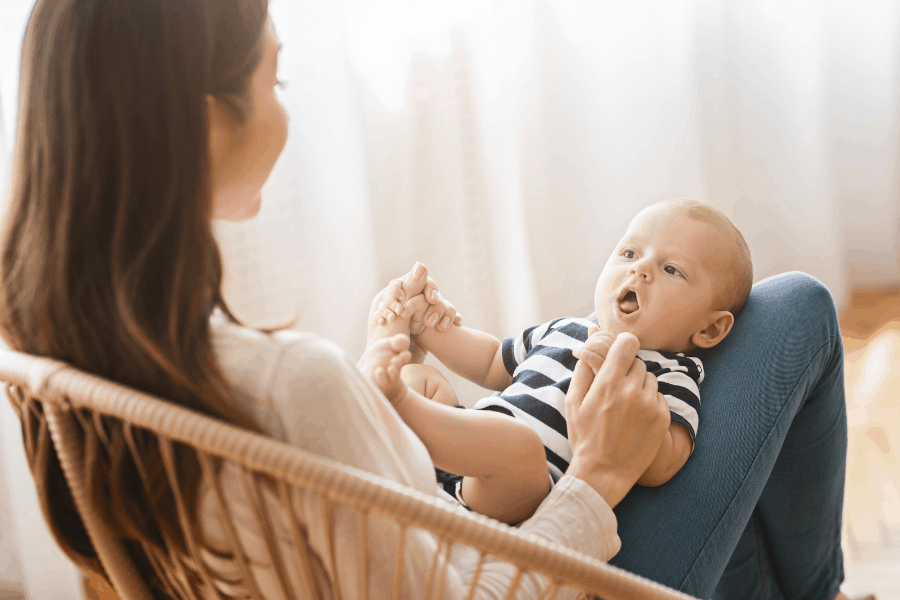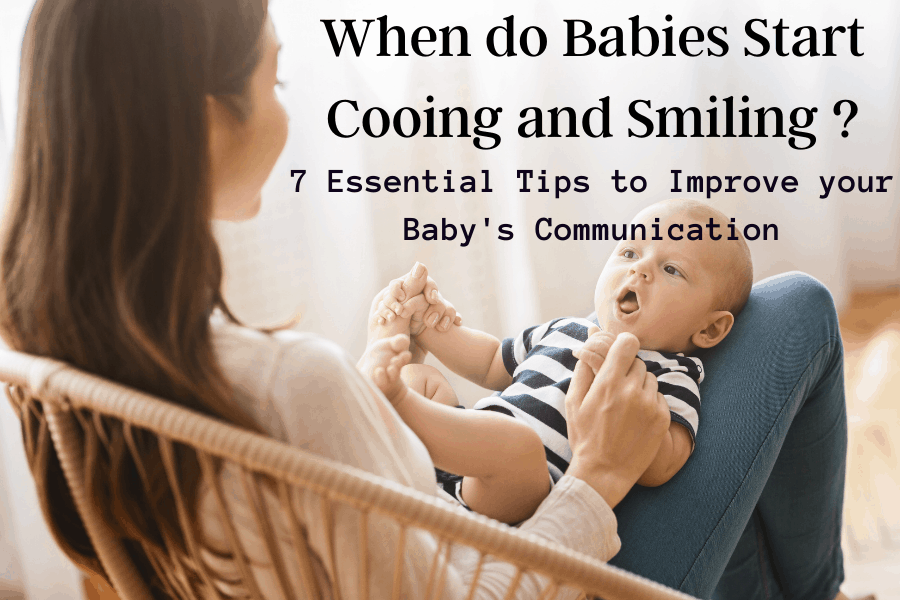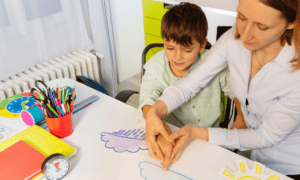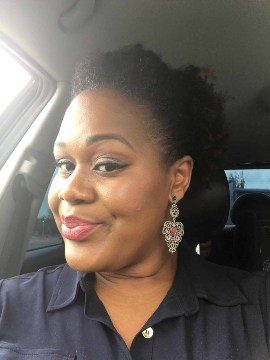This post may contain affiliate links which means I may receive a commission from purchases made through links. I will only recommend products I have personally used. Thanks.
When do babies start cooing and smiling? Of course, every parent wants their baby to be healthy and happy, and they often get anxious about their baby’s milestones, particularly those that are linked to social skills. It is also natural for parents to eagerly wait for their child’s all first, for example, their first smile, first word, and first step.
Smiling is the first sign of your baby’s social development. It means your baby is making a transition from an adorable sleepy baby to a sociable little person. And trust me, it’s a beautiful development.
When do babies start to coo? Up to two months of age, your child cries whenever he wants you or any other thing. But by the age of 6-12 weeks, your child starts to coo, his first vocalizing sound.
But when do babies start smiling and cooing? Why is cooing and smiling essential? How can you encourage your baby’s communication? These are all crucial questions that most parents ask, and in this article, we will delve into the answers.
When do babies start cooing and smiling?
Watching your baby grow is, of course, a heavenly experience, but it is filled with anxiety. Parents often worry about their child’s development and are naturally concerned about whether their child will meet their milestones.
So, when do babies start cooing and smiling? According to the Centre for Disease Control and Prevention, your baby will begin to smile and coo at the age of two months.
But if your little one is not doing so, don’t worry. Every child is different, and they all do not meet their milestones at the same time.
Why do babies smile and coo?
Why do babies smile? Well, the reasons are;
- Reflex smile – A baby starts smiling even before his birth. It is called a “reflexive smile.”
- Social smile – A social smile is reciprocal, which means your baby smiles at external factors like hearing your voice and seeing something he finds endearing, like a favorite toy or pet. Smiling is the first sign of communication between parent and child.
Reflex smile VS social smile
A reflex smile is short and occurs irrespective of external factors like when your baby is sleeping. But a social smile, on the other hand, is the real smile that happens when your baby is excited or playing or hears your voice or that of a familiar family member.
Cooing is the first vocal sound your child will make. Cooing is a way you will know your baby is happy and sound. By cooing, your baby will start controlling the muscles needed for talking.
Cooing is also your baby’s way of communicating with you by making sounds. Cooing involves the movement of different muscles and typically starts at 2 months of age. However, this timeline may vary from baby to baby.
Smiling and baby development – the science of smile
A social smile is an indication that your baby’s brain is developing and matured enough to be aware that he can connect with others through smiling. It is also a clue that your child’s vision is becoming clear as they are now smiling in response to your smile. Likewise, smiling means that your baby is beginning to realize his feelings.
Your baby may smile due to pleasure, excitement, contentment, and happiness. Research suggests that babies take smiling cues from their family, caregivers, or those who have face-to-face interaction with them.
Language development milestones – When should a parent be concerned?
If your baby is not smiling or cooing by six months, then you should contact a pediatrician. There might be some developmental issues with your baby, particularly if they are not doing any of the following;
- not responding to loud sounds by six months
- not making sounds (happy or unhappy)
- Doesn’t make eye contact or never smiles.
Tell your pediatrician the development your baby has attained between each visit and any concerns you may have. This will help the doctor rule out or diagnose underlying conditions like vision or hearing problems or autism. Remember, you know your child best. If you feel something is off, take advice from an expert.
How to encourage your baby to smile and coo? – 7 tips to improve your baby’s communication
Here are some tips that’ll help you:
1. Talk to your Baby
Talking to your baby is essential for their language and communication development. You are your child’s first teacher. Babies and toddlers can learn a language and other social skills by imitating adults.
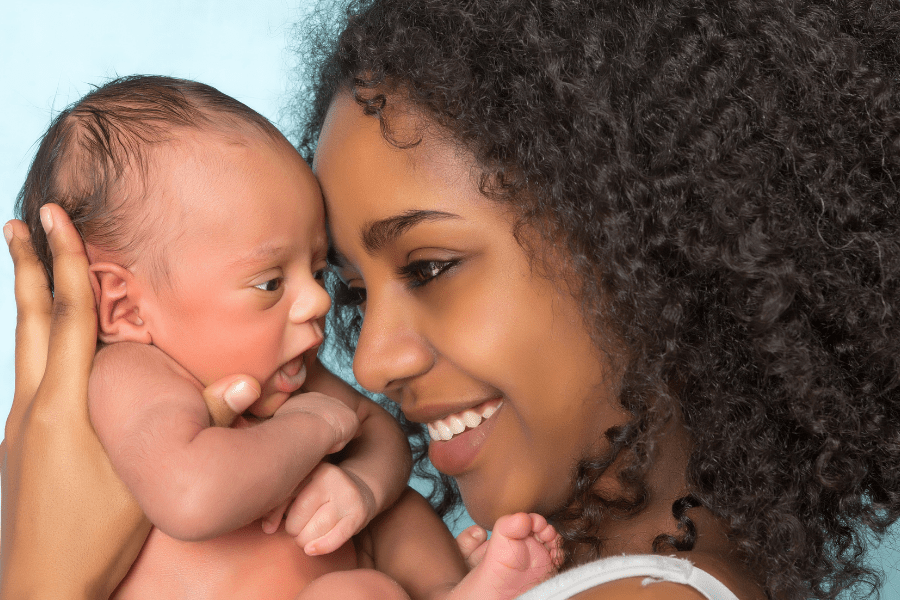
Start talking to your baby as soon as you can. Because even as newborns, your baby can absorb a lot of information. Your baby learns vowels sounds like “ah” and “oh” through your tone when talking.
- Whenever your baby coos, repeat those sounds back to your baby. This will encourage your baby to learn new sounds and sound patterns.
- Make eye contact with your baby while talking.
- Talk with your child about what you and your child are doing and seeing.
- Ask the question first, then answer it to help your baby understand.
- Speak clearly and often.
- Use actual words like goodnight, morning, water, milk, and so on.
- Repetition is the key. Repeat the exact words again and again so that your baby will learn them.
2. Sing to your Baby
Almost every parent sings lullabies to their babies to help them sleep. But you need not stick to lullabies only. You also can sing your favorite songs to your child. Do you know that music can help your child to start cooing? Music can also help your child to decipher the sound they hear.
Singing is one of the primary forms of communication that will help your child’s language development. Singing to your baby reduces their risk of developing language problems in later life. Vary the pitch and volume of your voice so that your baby can enjoy the song more.
There are several songs you can sing to your child. As you may probably know, the most popular Child song of the year 2020 was “baby shark doo-doo.” All those doo-doos in the song can help your child to learn vowels. Of course, there are other popular rhymes recommendations; For example, six little ducks, Mary had a little lamb and many more.
3. Read to your Baby
Reading provides a perfect opportunity for your baby to hear new sounds. Reading to your baby can help him improve language development and increased vocabulary. According to the American Academy of pediatricians, you should start reading a book to your baby every day starting from birth. This allows your child to hear new words and sounds. Over time as you read, your baby will try to imitate you or smile at the sound they hear you make while reading. Here are some tips for you:
- Choose books with rhymes, beautiful colors, pictures, and different sounds,
- While reading to your baby, use facial expressions to reflect the mood, emotions, and ambiance of the story you are reading. Change your voice pitch to make it more interesting.
- Relate the words to real things around them, e.g., Cats, traffic lights, fruits, etc.
- Create a daily routine such as bedtime stories.
4. Play games with your baby
Playing games with your baby also helps them to start smiling and cooing. Tickling, going on a picnic, pretend play (like talking on a phone, making cat or dog sounds), or imitating some actions (like bye-bye, hello) are all good examples of games you may wish to play with your baby.
5. Answer to Your Baby’s Sounds, Looks, and Gestures
When you respond to your baby’s actions and sounds, it encourages them to continue communicating with you. By interacting with your baby and being responsive to his actions and sounds, they will communicate with you even more. Your actions will also tell your baby that their communication is essential and effective.
For example, when your baby coos, coo back at them. When they lift their arms towards you, pick them up and ask in simple words, “You want up?”
6. Narrate what you are doing
Talking with your baby about your daily routine helps them to connect with the tasks being undertaken. Tell your baby what you are doing, for example, “let’s make dinner for your father” or “I am washing the dishes,” etc.
7. Schedule an Outing
Outings like visiting a zoo, park, or library, or grocery store, will surely help your baby to develop more language skills. Your baby will also get familiar with the outside environment, like a car, animals, traffic lights, sun, and many more.
Narrate to your baby what these are and what you are doing. The more you talk, the more they will learn. For example, when you visit the zoo with your baby, talk through what you can see with them. For example, here’s a monkey, and look how many ducks we have here.
What comes next after smiling and cooing?
We know from experience that some parents do not stop at asking the question- When do babies start cooing and smiling? Naturally parents are inquisitive about their children’s milestones and development.
Most babies will first make eye contact with you to communicate, then social smile, and then cooing.
What’s next? Well, by the time your baby is four to six months old, they should start babbling words or working their way through communicating with you through sounds, cooing, babbling, and even laughter. Yes, of course, they will continue to communicate with you by crying.
Now you know when to expect your baby’s social smiles and cooing. Although it may seem daunting to follow all the tips discussed in this article, you will be amazed by how helpful these interactions are and how much they can help your baby develop their social skills. So, keep going and encourage your baby to communicate with you.
Other Post you may like;
7 IMPORTANT SIGNS YOUR TODDLER IS NOT AUTISTIC
7 SIGNS A BABY IS CONSTIPATED AND EFFECTIVE HOME REMEDIES TO RELIEVE THEIR SYMPTOMS
Baby Hair Loss – 7 Simple Ways to Stop your Baby’s Hair from Falling Out
Related Posts
- 7 Signs a Baby is Constipated and Effective Home Remedies to Relieve their Symptoms
Can you identify signs a baby is constipated? Constipation in babies less than one year…
- 7 Simple and Effective Steps You Can Take Now if Your Baby is Not Eating
It’s undoubtedly a worrying time if your baby is not eating. You’re likely to be…
- 10 Steps to successfully weaning your baby
Being a parent, you will surely agree that we are in a never-ending learning process.…

